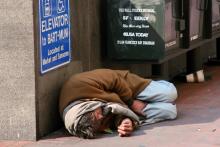Land Library
Welcome to the Land Portal Library. Explore our vast collection of open-access resources (over 74,000) including reports, journal articles, research papers, peer-reviewed publications, legal documents, videos and much more.
/ library resources
Showing items 1 through 9 of 10.Local commons are underutilized in resource management models, thus limiting the effectiveness of the commons concept.
Rangelands throughout sub-Saharan Africa are currently undergoing two major pressures: climate change (through altered rainfall and seasonality patterns) and habitat fragmentation (brought by land use change driven by land demand for agriculture and conservation).
This paper addresses pastoral resilience by drawing out the coping strategies and mechanisms utilized by the Maasai Pastoralists through a food system approach, based on the study findings of an anthropological study of pastoralism as a food system in Laikipia County, Rift Valley, Kenya.
Formal land titles are rare in pastoral communities around the world. In the past, this presented hardly any problems, since pastoral land was seen as of little use by most outsiders.
The former Soviet Central Asian republics have undergone de-intensification of their livestock sectors, resulting in an increased reliance on natural pastures. Property rights systems are key to the sustainable management of this resource.
Pastoralism – the predominant form of livestock keeping in the Horn of Africa – has always been a source of disputes and tensions in the region.
In a modeling study we examine vulnerability of income from mobile (transhumant) pastoralism and sedentary pastoralism to reduced mean annual precipitation (MAP) and droughts. The study is based on empirical data of a 3410 km2 research region in southern, semi-arid Morocco.
The Horn of Africa is one of the most conflict-prone areas of the world. It is also home to about 20 million pastoralists, which keep moving with their livestock in search for grazing land and water points. Pastoral conflicts are becoming more and more serious.
There is growing degradation in sylvo-pastoral lands that were originally under common property regimes, but over which the state now asserts ownership.







